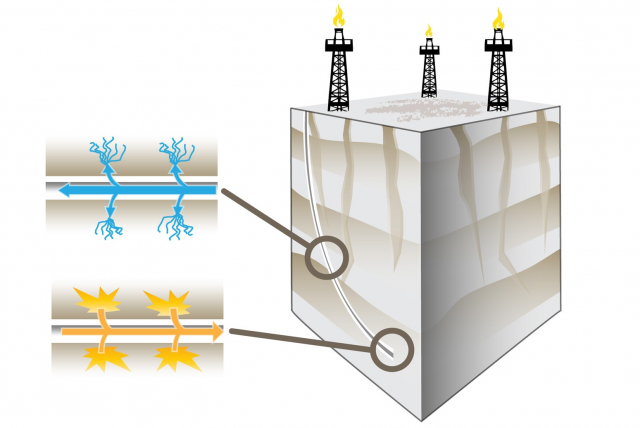What is hydraulic fracturing?

The most common method of gas extraction is called hydraulic fracturing which forces a special liquid that stimulates the performed drill and expands rock cracks, and leads to releasing the natural gas from deep layers.
High pressure and specific chemical composition causes the bore to "expand" and "branch out" which causes gas leakage from slate reserves. Additionally, proppants are introduced which are ceramic granules or their natural equivalent - sand which is supposed to increase gas leakage and prevent the crack from closing.
Nearly 95 percent of the crack liquid is water, mixed with sand in 3-4 percent. The rest is chemical additives, usually not exceeding 2 percent. Some of the chemicals that are in the mix are: ethylene-glycol and formamide which are responsible for the condition of the facing pipes, potassium chloride supporting the bore wall stability or isopropanol which reduces surface tension of the fracturing liquid.
Controversies around the fracturing process can be partly explained by pointing out that this process is not only used for extracting gas and oil from unconventional reserves but also for stimulating ground waters as a way of facilitating waste recultivation (carbon oxide waste or leakage), for measuring rock layer tension, and for electrical energy production in geothermal systems.
